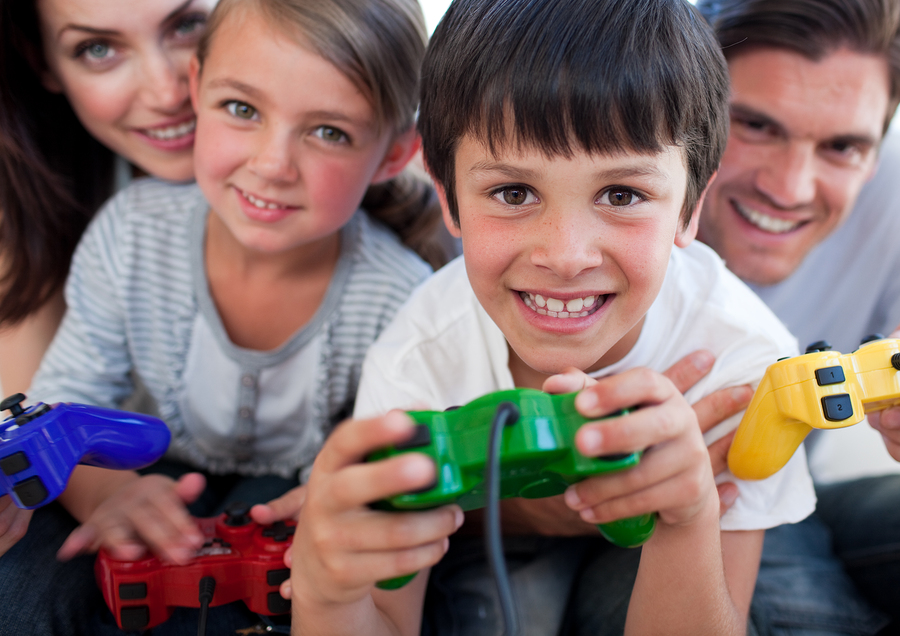Children and teens spend a lot of time playing video games. But if you’re a non-gaming parent, the games, the technology, and the whole culture surrounding gaming can seem impenetrable. This article won’t get into every single detail, but it will tell you what you need to know about online gaming as it relates to cyberbullying.
Gaming Platforms Are Social Networks
When people think of social networks, they usually think of Facebook, Instagram, Snapchat, etc. They usually don’t think of Steam, Xbox Live, the PlayStation Network, or the Nintendo Network, but these platforms offer a lot of the same functionality as more familiar social networks. Users can have friends lists, publically and privately message each other, trade virtual goods, and more.
What does this mean in terms of cyberbullying? Well, any kind of harassment that can happen on Facebook can happen on a platform like Xbox Live, including racist messages, password theft, dissemination of intimate images, and more.
Single Player vs. Multiplayer
A single player game is a game where it’s just the player versus the game. No one else is involved. You don’t need to worry about your child being cyberbullied within a single-player game. Interrogating your child about cyberbullying and single-player games may result in your child rolling their eyes and calling you lame. Note, though, that while your child plays a single-player game they can still be online and connected to one of the above-mentioned gaming platforms.
Multiplayer games are a different story. A multiplayer game involves the player with or against a lot of other players. In a first-person shooter like Counter-Strike, this means that they can be playing with a dozen or so strangers or people from their friends list for a short match. In a massively multiplayer online role-playing game (MMORPG) like World of Warcraft, they may be playing with hundreds of people they see regularly in guilds more organized than the average PTA.
When it comes to multiplayer games, your child should know how to block other players who become harassing or otherwise bullying. In general, the larger the social context a game has, the more opportunities there are for your child to be bullied. If your child plays a round of Counter-Strikewith a bully who keeps spamming nasty messages, it’s a simple matter to block that player and move on. However, if there’s a member of your child’s World of Warcraftguild who is harassing and is attempting to doxx your child by working out their real-world identity (to doxx is to broadcast private information about someone), the problem is a bit bigger and requires more of your attention. If you’re at a loss, it’s a good idea to contact an administrator of the game your child is playing or the platform they’re using.
Accounts, Games & In-Game Items Have Real-World Value
It’s hard for non-gamers to imagine, but in-game items like Team Fortress 2’s Bill’s Hat have real value. In this case, it’s worth about $4.30. The economies of video games can be huge. EVE Online’s economy is worth more than $50 million, for example. Valve, the company that owns Steam, once had Yanis Varoufakis as their in-house economist. Varoufakis’ next job was Minister of Finance in Greece. Items are worth what other players are willing to pay, games are worth what the publisher sells them for, and your child’s account—where all this stuff lives—is worth the sum total of all it’s attached games and items.
Now here’s the cyberbullying angle. Pre-internet bullies might beat up a victim for their lunch money. Modern cyberbullies try and scam their victims out of in-game items or even entire accounts.
Remember trading hockey cards or stickers as a kid and getting swindled? That still happens, but now it’s your kid accidentally giving away a rare Team Fortress 2 hat. It’s a good idea to supervise young kids who want to make trades.
The bigger danger, in monetary terms, is a cyberbully attempting to hack or take control of your child’s game account. For example, a Steam account with twenty or so games and a bunch of items can be worth a few hundred dollars. A cyberbully who does this may also chose to impersonate your child or send harassing messages to their friends. It’s very important to keep accounts private, keep them clear of too much personal data, enable two-factor authentication, and adjust parental controls such that you’re kept informed of changes to your child’s account.
The Bottom Line
Gaming can seem overwhelming to a non-gamer. However, if your child is an active gamer and you’d like to protect them from cyberbullying, it’s important to understand a little bit of it. Next time, we’ll give you some specific tips to help you navigate the gaming world.



